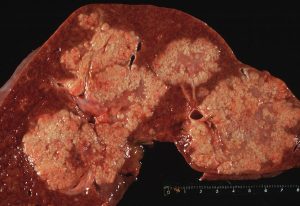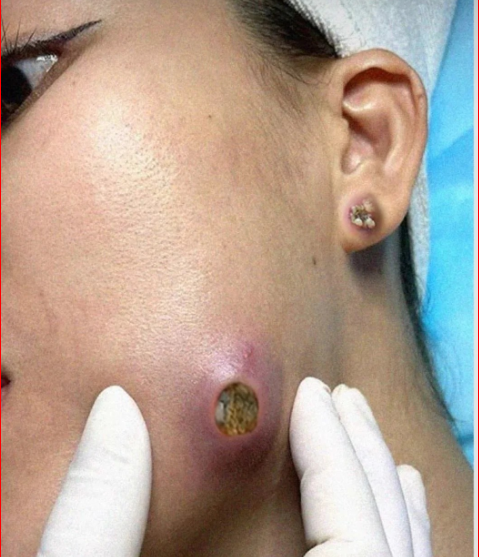Liver damage occurs when the liver’s cells become injured or diseased, leading to a disruption in its normal functions. There are various causes of liver damage, and the degree of damage can vary from mild to severe. Here are some common ways liver damage can happen:
1. Alcohol Abuse
-
Chronic alcohol consumption can overwhelm the liver, leading to conditions like fatty liver disease, alcoholic hepatitis, and cirrhosis.
-
Drinking excessive amounts of alcohol over time causes liver cells to break down, leading to inflammation and scarring.
2. Hepatitis Infections
-
Hepatitis B and Hepatitis C are viral infections that cause inflammation and can lead to long-term liver damage.
-
Chronic infections can lead to cirrhosis, liver failure, and liver cancer.

3. Fatty Liver Disease
-
Non-alcoholic fatty liver disease (NAFLD) is the accumulation of fat in the liver in people who drink little or no alcohol.
-
It is often linked to obesity, diabetes, high cholesterol, or high blood pressure. In more severe cases, it can lead to non-alcoholic steatohepatitis (NASH), cirrhosis, or liver failure.
4. Toxins and Medications
-
Some medications, when taken in excess or over long periods, can damage the liver. Examples include acetaminophen (Tylenol) and certain antibiotics or antifungal medications.
-
Environmental toxins and chemicals can also contribute to liver damage.
5. Genetic Disorders
-
Certain inherited conditions like hemochromatosis (iron buildup) or Wilson’s disease (copper buildup) can cause liver damage over time.
-
Alpha-1 antitrypsin deficiency is another genetic disorder that can lead to liver disease.
6. Autoimmune Diseases
-
Autoimmune hepatitis is a condition where the body’s immune system mistakenly attacks liver cells, leading to chronic inflammation and liver damage.
7. Liver Cancer
-
Liver damage from chronic disease (e.g., cirrhosis, hepatitis) can increase the risk of developing liver cancer. Hepatocellular carcinoma is the most common form of liver cancer, which typically occurs in the context of cirrhosis or chronic hepatitis.
8. Poor Diet and Obesity
-
A diet high in processed foods, sugars, and unhealthy fats can contribute to fatty liver disease and overall liver damage.
-
Obesity increases the risk of developing fatty liver disease, which can lead to more serious liver conditions over time.
Symptoms of Liver Damage
Liver damage may not show noticeable symptoms until it’s quite advanced, but common signs include:
-
Fatigue and weakness
-
Jaundice (yellowing of the skin or eyes)
-
Abdominal pain or discomfort (especially in the upper right side)
-
Nausea and vomiting
-
Swelling in the abdomen or legs
-
Dark urine and pale-colored stool
-
Itchy skin
-
Easy bruising or bleeding
Diagnosis and Treatment
Liver damage can be diagnosed through:
-
Blood tests to check liver function
-
Imaging tests (ultrasound, CT scan, or MRI)
-
Liver biopsy (in some cases, to determine the extent of damage)
1. Alcohol Abuse
Chronic alcohol consumption is one of the leading causes of liver damage. The liver breaks down alcohol, but excessive drinking overwhelms its capacity to process alcohol, resulting in liver inflammation, scarring, and eventually cirrhosis.
-
Fatty Liver Disease (Alcoholic Steatosis): The liver stores fat when overwhelmed with alcohol, causing the liver cells to become fatty. While this condition may be reversible with abstinence, if left untreated, it progresses to more severe liver damage.
-
Alcoholic Hepatitis: This is an inflammation of the liver caused by heavy drinking. It can lead to symptoms like jaundice, fever, and abdominal pain.
-
Cirrhosis: Long-term alcohol abuse leads to the progressive scarring of liver tissue (cirrhosis). This irreversible damage can result in liver failure.
Reference:
-
O’Shea, R. S., Dasarathy, S., & McCullough, A. J. (2010). Alcoholic liver disease. The American Journal of Gastroenterology, 105(1), 14–32. https://doi.org/10.1038/ajg.2009.565
2. Hepatitis Infections
Viral hepatitis, particularly hepatitis B and hepatitis C, can cause chronic liver inflammation and lead to cirrhosis and liver cancer.
-
Hepatitis B: A viral infection transmitted through blood and body fluids. Chronic infection can lead to cirrhosis and hepatocellular carcinoma (liver cancer).
-
Hepatitis C: Often transmitted through blood (e.g., shared needles), this virus can lead to chronic infection and severe liver damage over time, resulting in cirrhosis and liver cancer.
Reference:
-
Lok, A. S., & McMahon, B. J. (2009). Chronic hepatitis B: Update 2009. Hepatology, 50(3), 661-662. https://doi.org/10.1002/hep.23190
-
Hoofnagle, J. H., & Jones, D. M. (2002). Hepatitis C: Biology and management. Gastroenterology Clinics of North America, 31(2), 365-382. https://doi.org/10.1016/S0889-8553(02)00008-0
3. Fatty Liver Disease (Non-Alcoholic Fatty Liver Disease – NAFLD)
Non-alcoholic fatty liver disease (NAFLD) is the accumulation of fat in the liver without alcohol consumption. It is associated with obesity, diabetes, high cholesterol, and other metabolic conditions. It can progress to non-alcoholic steatohepatitis (NASH), which involves inflammation and liver damage.
-
Non-Alcoholic Steatohepatitis (NASH): This is a more severe form of NAFLD, where the fat buildup causes liver inflammation and damage, potentially leading to cirrhosis.
-
Risk Factors: Obesity, type 2 diabetes, and metabolic syndrome are key risk factors for developing NAFLD.
Reference:
-
Vernon, G., Baranova, A., & Younossi, Z. (2011). Nonalcoholic fatty liver disease: An overview. Journal of Clinical Gastroenterology, 45(4), 160-168. https://doi.org/10.1097/MCG.0b013e3181fd38e2
4. Toxins and Medications
Certain medications and environmental toxins can cause liver damage. For example:
-
Acetaminophen Toxicity: Overdosing on acetaminophen (Tylenol) is one of the most common causes of acute liver failure. The liver processes acetaminophen, and excessive doses can overwhelm its capacity, causing damage to liver cells.
-
Other Medications: Statins, antibiotics, and antifungals can sometimes cause drug-induced liver injury (DILI), leading to liver inflammation and damage.
-
Environmental Toxins: Exposure to certain chemicals, such as aflatoxins (toxins produced by fungi), can increase the risk of liver damage and liver cancer.
Reference:
-
Larson, A. M., & Kostrubala, P. J. (2004). Acute liver failure. The American Journal of Gastroenterology, 99(9), 1810-1816. https://doi.org/10.1111/j.1572-0241.2004.30362.x
-
Kaplowitz, N. (2002). Drug-induced liver disease. The American Journal of Medicine, 112(6), 479-487. https://doi.org/10.1016/S0002-9343(02)01045-1
5. Genetic Disorders
Some inherited genetic conditions can affect liver function:
-
Hemochromatosis: This disorder causes excessive iron accumulation in the body, leading to liver damage, cirrhosis, and liver cancer.
-
Wilson’s Disease: A genetic disorder that causes copper buildup in the liver and other organs, leading to liver failure if untreated.
-
Alpha-1 Antitrypsin Deficiency: A genetic condition where a deficiency in alpha-1 antitrypsin leads to liver disease and lung problems.
Reference:
-
Beutler, E. (2009). Hemochromatosis: Genetics, pathophysiology, diagnosis, and treatment. The American Journal of Medicine, 122(6), 573-581. https://doi.org/10.1016/j.amjmed.2008.10.039
-
Schilsky, M. L. (2011). Wilson’s disease: Pathogenesis, diagnosis, and management. Hepatology, 53(4), 1332-1344. https://doi.org/10.1002/hep.24292
6. Autoimmune Diseases
-
Autoimmune Hepatitis (AIH): This is a condition where the body’s immune system attacks liver cells, leading to chronic liver inflammation, cirrhosis, and potentially liver failure.
Reference:
-
Janssen, H. L. A., & Van der Meer, A. J. (2009). Autoimmune hepatitis: Epidemiology, clinical features, and treatment. Hepatology, 49(1), 74-82. https://doi.org/10.1002/hep.22570
7. Liver Cancer
Chronic liver damage from conditions like cirrhosis, hepatitis, or NAFLD increases the risk of liver cancer, particularly hepatocellular carcinoma (HCC). Liver cancer often develops in the context of cirrhosis and chronic hepatitis B or C infection.
Reference:
-
El-Serag, H. B. (2011). Hepatocellular carcinoma: An epidemiologic perspective. Journal of Clinical Gastroenterology, 45(1), S1–S8. https://doi.org/10.1097/MCG.0b013e3181f97f1b
8. Poor Diet and Obesity
-
Obesity: Excess body fat increases the likelihood of developing non-alcoholic fatty liver disease (NAFLD) and non-alcoholic steatohepatitis (NASH). These conditions can lead to cirrhosis and liver failure if not managed.
-
Diet: A diet high in fats, sugars, and processed foods contributes to obesity and fatty liver disease, further increasing the risk of liver damage.
Reference:
-
Ratziu, V., & Bellentani, S. (2010). Non-alcoholic fatty liver disease: The role of obesity and insulin resistance. Journal of Hepatology, 53(4), 828-834. https://doi.org/10.1016/j.jhep.2010.02.024
Diagnosis and Treatment
Liver damage can be diagnosed using blood tests (such as liver enzyme levels), imaging techniques (like ultrasound or CT scans), and, in some cases, a liver biopsy. Treatment depends on the underlying cause, but it may involve lifestyle changes (diet, alcohol cessation), medications, or even a liver transplant for severe liver failure.
Reference:
-
Sanyal, A. J., & Chalasani, N. (2008). Management of non-alcoholic fatty liver disease. Hepatology, 47(6), 1806-1813. https://doi.org/10.1002/hep.22134
